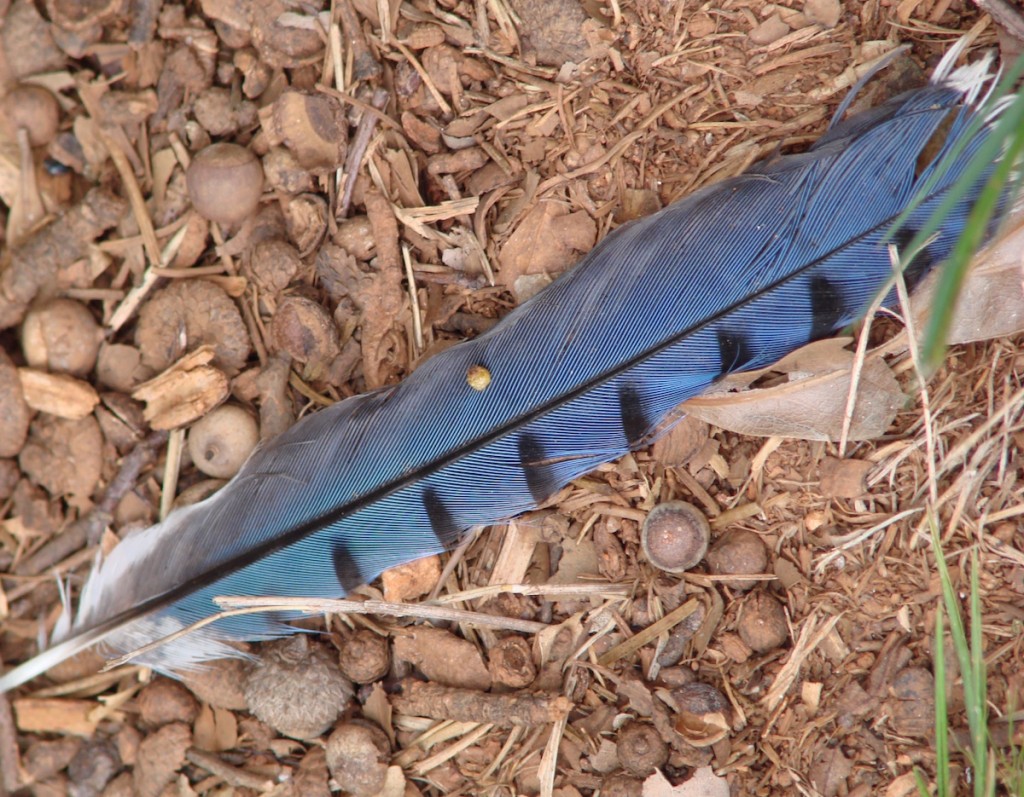
You may have heard the urban legend. One day a guy is hiking along a trail and he spots a gorgeous-looking feather on the ground. He picks it up and carries it around in his hand, looking at it with wonder and curiosity. That’s when he’s arrested and fined $100,000 for possessing a feather illegally.
Sounds preposterous right?
Wrong. While the details of the urban legend may be exaggerated, it is in fact illegal to collect certain bird feathers thanks to the Migratory Bird Treaty Act of 1918.
The nearly 100-year-old act was put into place to protect birds that migrated between the United States and Canada because of a decline in bird populations. Hunting was fairly rampant because the fashion during that time featured hats adorned with bird feathers.
The treaty makes it unlawful to hunt, take, capture, kill, or sell migratory birds. The statute extends to any bird part, including feathers, eggs, and nests.
It seems harmless to pick up a nest or feathers you find on the ground, but it’s against the law because it’s difficult for enforcement officers to figure out whether it was obtained through ignominious or accidental means. So they put the burden on the carrier of the feather and took away the question.
More than 800 species are currently on the list, including the Bald Eagle, Black-capped Chickadee, Northern Cardinal, American Crow, Canada Goose, Mourning Dove, Barn Swallow, Cedar Waxwing, Barn Owl, and more. That means the feathers of all of these birds are forbidden.
An exemption to the act does exist, however. The Eagle Feather Law allows the collection of Golden Eagle and Bald Eagle feathers for religious purposes by Native Americans. In order to quality, individuals must have certifiable ancestry and be enrolled in a tribe.
 Despite sounding a tad ridiculous these days, the roots of the law are sound and still serve a purpose.
Despite sounding a tad ridiculous these days, the roots of the law are sound and still serve a purpose.
You might also be asking yourself what about the bird feathers you see at stores.
Since certain species aren’t protected under the Migratory Bird Treaty Act, picking up and possessing their feathers is perfectly legal. That means nonnative species like House Sparrows and European Starlings aren’t covered, along with nonmigratory birds like turkeys, chickens, Mute Swans, quails, and the like.
So the next time you see a bird feather on the ground, you’d better be sure it’s from an invasive species or nonmigratory bird or leave it alone.



189 Comments
I’m sorry, one more thing. You mentioned Article 6. It states that “This Constitution, and the Laws of the United States which shall be made in Pursuance thereof; and all Treaties made, or which shall be made, under the Authority of the United States, shall be the supreme Law of the Land; and the Judges in every State shall be bound thereby, any Thing in the Constitution or Laws of any state to the Contrary notwithstanding.”
If I understand English correctly, this is saying that any treaty made or shall be made under the authority of the United States, like this one here, becomes the law of the land. So, how does the Migratory Bird Treaty Act of 1918 violate Article 6?
Since you study Constitutional Law and win Curt cases, perhaps you can answer a question for me.
If this is truly unconstitutional, it should violate the wording of the United States Constitution, correct? This Act came out of a treaty. Under Article 3, section 1 of the Constitution, it is stated that the judicial power shall extend to all treaties made under their authority. Since this was a treaty made under the enumerated powers of the judicial party, the treaty and subsequent laws made under its scope apply to the power of the Judicial system. Therefore, it appears to fall under the exact wording of the Constitution. A treaty, rather than being left to state discretion, would be within Federal jurisdiction, wouldn’t it?
You can own Turkey feathers. Also any non migratory species.
You can have:
Feathers from most birds that are not native to North America. European Starlings, House Sparrows, Eurasian Collared Doves, and Ring-neck Pheasants are not native to North America. Also, think feathers of peacocks, many parrots, most of the 55 species of pheasants, and small songbirds like zebra finches that are kept in cages. The biggest exceptions to this are the restrictions on having feathers of most birds that live outside North America that are critically endangered.
Feathers from most wild duck and geese you can own but can’t sell, except for mallards. You can sell other kinds of duck feathers only if it is for fly tying for fishing.
Upland birds that people hunt—like turkey, grouse, and pheasant. Each state can have more restrictive laws, like in Washington State the Sharp-tailed Grouse is threatened so you can’t have those feathers unless you show it came from another state where hunting is permitted.
You can’t have:
Feathers from almost all other birds in North America —not eagles of course, unless you’re Native American and obtain a permit, but also not gull feathers, songbird feathers, or even crow feathers (unless you have a permit to kill crows, but you still can’t sell them).
Feathers from many birds from other countries that are critically endangered.